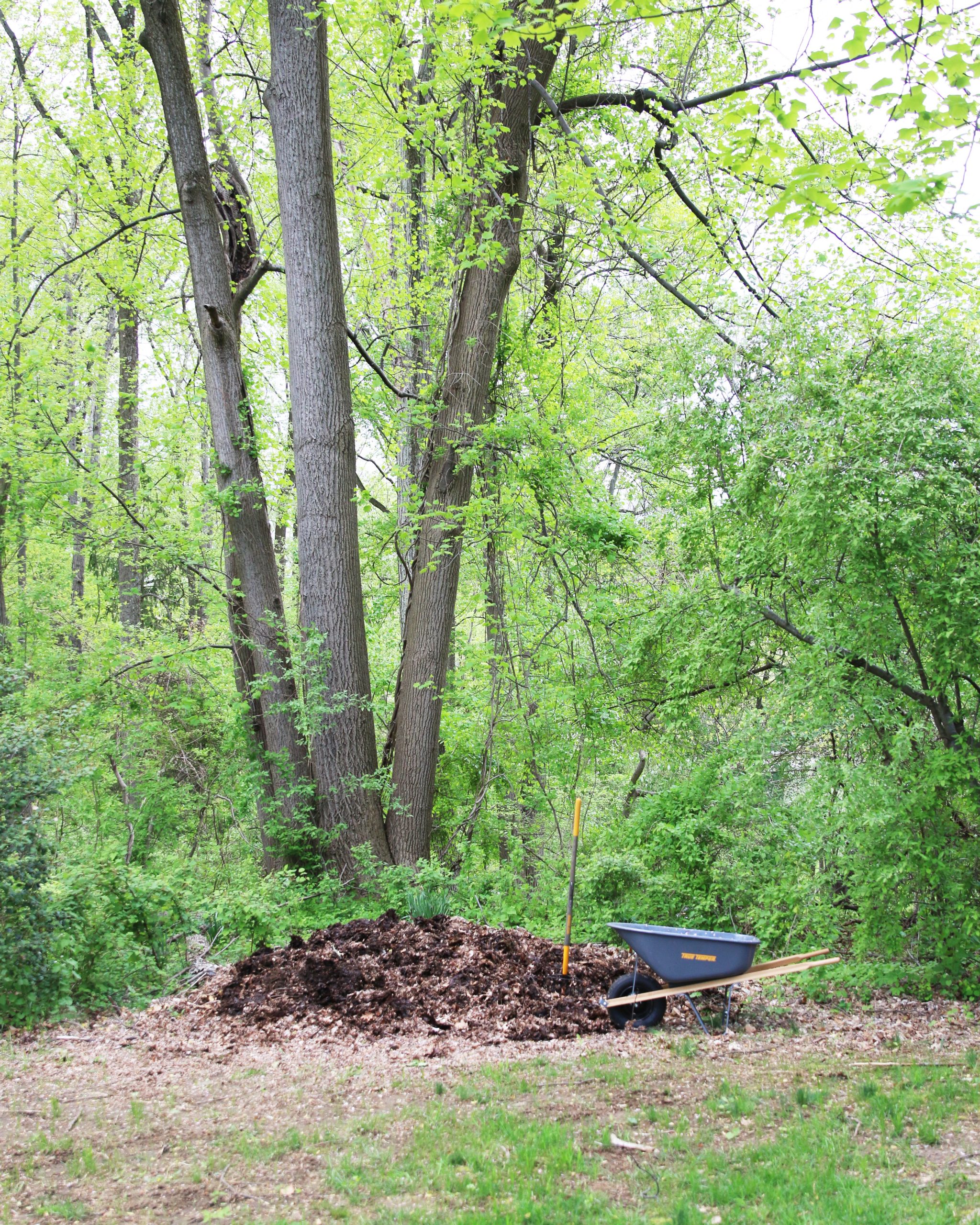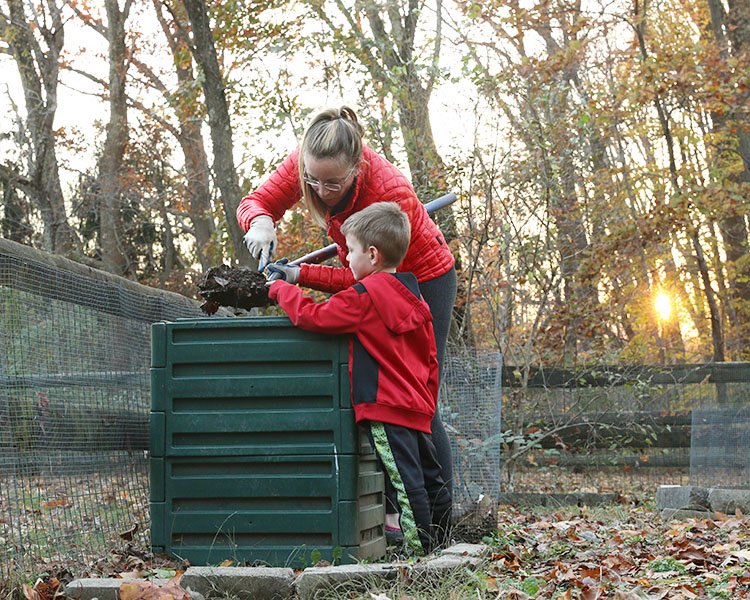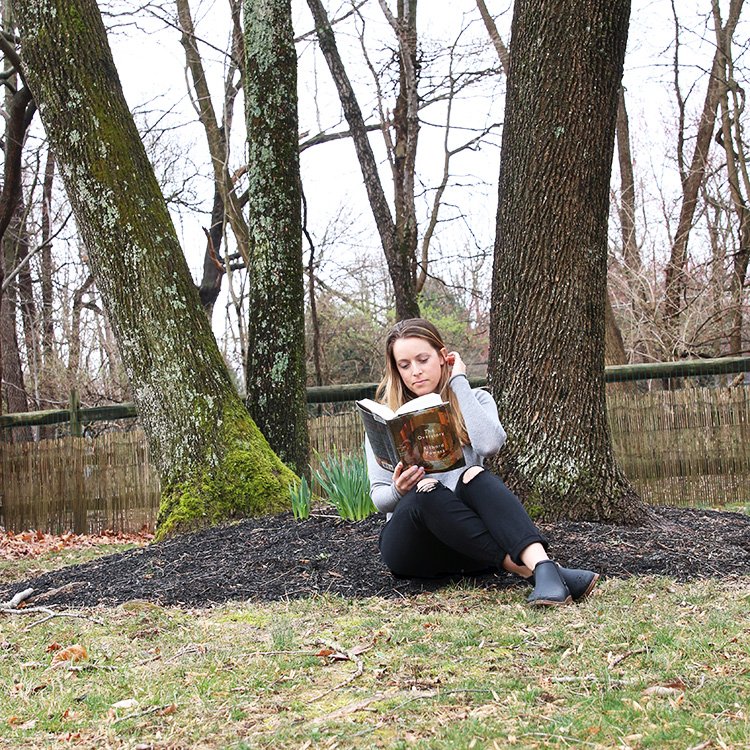How We Employ Regenerative Practices In Our Home Garden
What if we could make the earth healthy by making more eco-conscious choices in our garden? Using regenerative gardening practices, we can have a positive impact on the planet. Check out these eight ways we practice regenerative habits in our home garden.

It might be the middle of winter, but I’m starting to think about our garden for the upcoming season. A little planning goes a long way toward a healthy garden, especially one built on regenerative practices that keep the soil and garden healthy without unnecessary fertilizers and pesticides.
After developing a serious crush on composting (… who knew that was possible…), I started focusing a lot more on ways to practice regenerative gardening habits in our home garden. While sustainable habits keep things status quo, regenerative practices benefit the soil and ecosystem to make them healthier and stronger over time.
Regenerative Gardening At Home
Last year, I tried a few regenerative gardening practices, all of which proved to be great changes that benefited our garden and made it easier for me to manage. It was a win across the board, and I’m pumped to incorporate even more regenerative gardening skills into my garden this upcoming year.
Kiss The Ground hosts an online and in-person class (in Los Angeles, California) all about Regenerative Gardening and Living that has been particularly helpful and incredibly interesting. I joined the online class last fall and am still working my way through the final modules. I’ve already learned so much. If you’re interested in learning more about Regenerative Gardening and Living in your house, I highly recommend checking out this class. You can get 10% off with code SOIL2020.
As I’ve learned more about the principles, I’ve incorporated several regenerative practices in our little home garden to help it flourish and better nourish our family. Here are some of the ways we incorporate regenerative living principles in our family’s fruit and vegetable garden.

8 Ways To Employ Regenerative Practices In Your Home Garden
Composting
Composting might be the simplest and most straightforward regenerative garden practice. Just about anyone can find a way to compost their food scraps and feed the soil in their garden or their community.
We compost all of our produce kitchen scraps as well as yard waste to create nutrient-rich humus for the soil. Throughout the year, I add to the bin and use the humus for replenishing soil in a bed, adding nutrients to the soil at the end of a growing season, or just adding a little boost to any plants that could use some love. You can find all the dirt on our homemade dirt in my edition of Bring Your Trash To Life.
Ignore The Weeds
I do not have a Pinterest perfect garden. To help increase water retention and reduce soil erosion, I let weeds grow in the pathways between beds. Not only do the weeds protect the soil (as opposed to leaving it bare), but they also provide food and shelter to many bugs and pollinators that help maintain a healthy balance in the ecosystem of my garden.
I trim the weeds once or twice during the summer if they grow tall enough to bother me when I’m working in the garden, but generally, I leave them be. I don’t ignore all the weeds; I pull those near plants when the weeds threaten to overtake the plants and utilize all the nutrients from the soil. But otherwise, I trust that weeds play an important role in a healthy garden ecosystem (and I save myself the hassle of dealing with them).
Birds and Bugs Are Welcome
Many insects and animals that most gardeners shun from their space actually provide great benefits to the garden. My son J helped me add several pollinator-friendly plants and flowers to the garden this year to attract bees, butterflies, and other creatures that benefit the garden. Further, we use no pesticides of any kind. Instead, we rely on healthy soil to keep plants strong and birds and bats to eat unwanted bugs.
Birds and bats also help pollinate plants while eating many of the bugs that would otherwise harm the plants. Flourishing ecosystems in nature are diverse and teeming with life. For the most part, it behooves us to replicate what nature knows works best.
I do protect my garden from some animals. The garden is fenced in to prevent deer, rabbits, and groundhogs from entirely destroying it. They would eat the plants to nubs in no time. I protect our strawberry plants with nets during peak growing season or they become a dessert bar for birds and we have no strawberries at all. Outside of the peak season, I leave them uncovered and let the birds have their fill. I also leave our raspberries and blackberries uncovered. I am happy to share a few with the birds as we have plenty leftover for our family.
Intensive Planting
Many seed packets and planting instructions suggest leaving lots of space between seeds and seedlings to allow room for growth. However, we plant crops quite a bit closer together, allowing us to make more efficient use of the space, reduce the growth of weeds, and keep the soil shaded to help it retain moisture and limit erosion due to direct rainfall.
As we planted our garden over the last couple of years, I found I can plant things a bit closer together than suggested spacing without overcrowding or harming the plants.
Cover Crops or Compost Covering
Cover crops are secondary crops planted outside of the primary growing season that help rebuild the soil. Some cover crops return nutrients to the soil. Other cover crops simply help the soil retain water and prevent erosion of uncovered soil to increase the health of the soil for the next growing season.
Last year, we planted clover in a few of the beds after pulling out the remains of squash, eggplant, and pepper plants that were no longer producing. Clover helps return nitrogen to the soil after certain vegetable plants utilize the nitrogen for growth and development. This year, I pulled up the plants too late for the second round of crops but covered each of the beds with a fresh layer of compost and then a blanket of fallen leaves so the soil was not directly exposed to rain, sun, and air.
A layer of cover crops, straw, dried leaves or other organic materials protects the soil and replenishes it so it’s revived for another round of planting in the spring.

Crop Rotation
Different types of plants draw different nutrients from the soil while they grow. Thus, planting the same plants in the same areas year after year can strip the soil of the nutrients needed by that plant. By rotating crops, plants utilize the variety of nutrients available to help different types of plants over a series of many years.
Soil is also full of bacteria and microorganisms that are important for soil health but can carry disease. By planting the same fruit, vegetable or crop in the same place each year, it increases the likelihood of lingering disease to effect particular plants in that area.
Last year, I drew a little map of my garden and wrote down what vegetables I planted in each bed. This past spring, I planted different crops in each of those beds to sustain biodiversity.
Partner Planting
Different types of plants require different nutrients, spacial demands, amounts of sunlight and more. In short, different plants prefer different living conditions. Shocking… I know. Certain plants also like living near each other because their needs complement each other; they live in a nice symbiotic relationship when paired together.
Squash, beans, and corn (called “the three sisters”) is the quintessential trio of plants that grow well together due to their different shapes and nutritional needs. Beans grow up the corn stalk while squash stays low and its large leaves keep soil covered. Beans also replenish nitrogen in the soil that is used up by the corn and squash.
When I planted my garden this spring, I tried some very basic partner planting schemes. I planted beans near sunflowers so the beans could climb up the sunflower stems. Unfortunately, this didn’t work all that well with respect to the beans climbing up the sunflower stems, but both plants grew well.
In addition to planting different types of fruit and vegetable crops near each other, I also planted a dozen or so annual flowers like marigolds around vegetable plants. Marigolds attract bugs and insects away from produce and also help cover surrounding soil without planting competing crops that would fight for the same nutrients from the soil. This proved to work very well for things like pumpkin and butternut squash that ultimately take up a lot of space but start small and can grow around the annual plants as the summer progresses.
Straw and Cardboard on the Ground
In the spring, I laid corrugated cardboard on the paths in the garden and then bought two bales of straw to spread around the garden over the cardboard. Clean corrugated cardboard (all tape and stickers removed) is a great source of carbon for the compost bin and can help replenish the soil. In the walkways, the cardboard and straw cover help prevent weed growth and encourage soil repair, limit soil erosion and increase water retention
Chickens… Someday
Down the road, I would love to have chickens. Their manure is a great addition to a compost pile to regenerate the soil and they eat many of the bugs that bother plants. I’d also love to have fresh eggs for our family. But I’m not yet ready to take on that time commitment for now.
In the end, we build healthy soil and ecosystems by treating them the way they exist in nature. Ecosystems and the soil that supports them are filled with biodiversity. A variety of plants, animals, and microorganisms keep gardens and ecosystems teeming with life and regenerating themselves through growth and decomposition cycles that have been churning for millions of years to support all life on our planet.
Most of the regenerative gardening practices above are really not that hard, especially if you have a garden already. Many regenerative gardening practices rely on changing our actions, not necessarily adding new ones or making the process more difficult. It is just different.
Do you have any regenerative living habits you practice in your garden? Share them in the comments! It helps make this post more useful for everyone.
Complete Guide To Composting At Home
For more information about how to compost at home, check out our Complete Guide To Compost At Home with loads of articles to answer all your questions about how to compost at home. We have resources, FAQs, interviews with everyday families who compost at home, and more!










Hi there! I just watched the new Kiss the Ground documentary and am interested in learning more about how I can practice regenerative agriculture at home (though I don’t yet have a home garden). I see this post links to Kiss the Ground classes, but on their website, I only see the “Soil Advocate” class. Is that the one you’re referring to? Thanks so much!
Hi Meredith! Thanks for reaching out. I believe they only have one class right now. They used to have a Regenerative Gardening class hosted by a great gardener/farmer who launched his own practice. As expected, they share a lot of common principles for restoring health to our soil and using that as a means for climate change. His name is Farmer Rishi and you can find his Regenerative Gardening course here called Increase Your Footprint: https://www.healinggardens.co/iyfcourse
I am also working on a post about applying regenerative practices to home living more generally, and not just in the garden. This post may help a bit in that light: https://www.honestlymodern.com/what-is-regenerative-living-for-modern-families/ — and hopefully I can put together something more specific for in our homes. 🙂 Thanks for the note and so glad you watched the movie. It was great!
I want to start regenerative gardening. I get the idea of not baring the ground. I live in the southwest, the high desert, & I have a horrible problem with goatheads & other very invasive weeds. The more I pull the more come back & stickers get picked up by on shoes & spread throughout the yard. Can anyone please share advice on this?
Hi Cathy. Thanks for the question. I’m not sure exactly what plants would be good for your area, but have you heard of xeriscaping? It’s growing in popularity for areas with dry climates like where you mention you live. Here’s a bit more information on it. https://www.nationalgeographic.org/encyclopedia/xeriscaping/ You could potentially look up plants that are native to your area and try to incorporate some of those. They should be helpful to the local ecosystem and also keep some of the weeds at bay. Hope this helps. -Jen